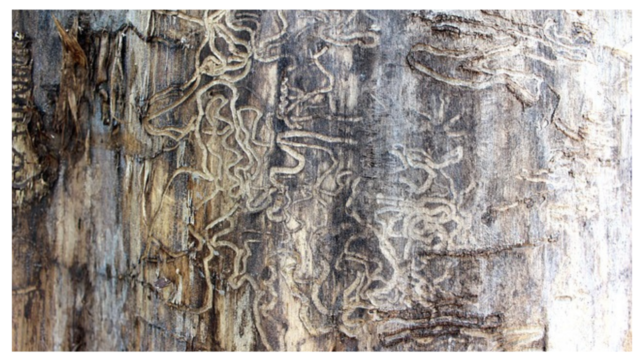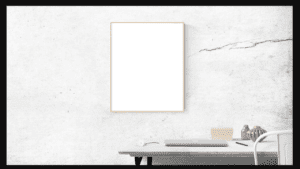You will be surprised to know that there are more than 2750 species of termites found all over the world.
Out of which 45 types of species are found in the US. 360 types of species are found in Australia and 220 types of species are found in India.
All these species can be mainly divided into three parts on the basis of their behavior, structure, and characteristics.
Such as Subterranean Termites, Drywood Termites, and Dampwood Termites.
All three types of termites are very deadly, but today we are going to talk mainly about Drywood termites.
We will talk about the following important topics:
- What are drywood termites & Drywood Termites Vs Subterrenean Termites
- How serious are drywood termites?
- What are drywood termites attracted to?
- How to prevent drywood termites?
- Signs of Drywood Termites and how do you find a drywood termite nest?
- What is the best DIY treatment for drywood termites?
- Conclusion
What Are Drywood Termites & Drywood Termites Vs Subterrenean Termites
Life Cycle:
The lifecycle of the Drywood termites can be mainly divided into four parts.
- King and Queen (The first male and female that build the nest and mate).
- Young nymphs
- Workers
- Soldiers and Reproductives.
First, young nymphs emerge when the eggs hatch, which grows up to take the form of workers. It is the workers who damage the wood and feed other young nymphs and King and Queen.
Some of these workers become soldiers and some of them become reproductives when they get mature.
Soldier termites serve to protect the nest from outside enemies such as ants or other insects. And reproductives help to spread the infestation.
Body:
People are faced with worker or soldier termites only. Worker termites are whitish to beige colored. They do not have wings and can range in size from 1/4th to 3/8th of an inch.
Soldier termites, on the other hand, are slightly larger than worker termites. They can be 5/16th inch long. Soldiers look brownish to yellowish in color. Soldier termites’ pronotum is wider than the head.
Behavior:
You will be surprised to know that Drywood termites make their nest without coming in contact with the soil. It does not depend too much on moisture to survive, it gets enough moisture from the fibers of the wood.
Drywood Termites Vs Subterranean Termites:
The most important difference between the two termites is that the nest of the Drywood termites is found in the damaged wood, whereas the subterranean termites make their nest inside the soil.
Drywood termites are larger in size than subterranean termites. Subterranean termites use mud tubes to transport food, whereas Dryood termites hollow out the wood inside.
Drywood termites swarm during the night and subterranean termites prefer to swarm during the day.
The colony of Dryood termites is relatively small and does not damage the foundation of the house whereas subterranean termites have the potential to badly damage the foundation of your home.
How Serious Are Drywood Termites?
Although Drywood termites do not damage the foundation of your home, they can damage the most expensive wooden furniture in your home.
Drywood termites prefer to nest in wooden cabinets, door frames, window sills, wardrobes, wooden fall ceilings, and all types of woods that contain cellulose.
Infestation signs of subterranean termites are a little easier to spot, but the symptoms of Drywood termites are not so quickly detected because they tend to hollow out the wood inside while subterranean termites can be spotted through mud tubes.
What are Drywood Termites Attracted To?
Many people think that all the species of termites thrive only in moisture, so let me tell you that Drywood termites spread their infestation even in no humid environment.
Drywood termites are most attracted to dry and damaged wood. Along with, old cardboard, newspaper, and old garbage lying in the house also attract them.
How to Prevent Drywood Termites?
As I mentioned above, Drywood termites prefer to build their nests in dry and damaged wood. Also, they like very much old garbage and cardboard. You can take some measures given below to prevent them.
Be sure to use Borate spray on the wood before priming or painting:
Borate keeps your most expensive furniture safe from termites for years. And it is one of the most popular pest repellents. It is used on wood before priming and painting and after it has dried you can paint the wood. It goes up to the wood fibers and protects them from termites.
Do not store old newspapers, cardboard, and junk in the house:
Many people have a habit of keeping old newspapers, cardboards, and old documents for years without laminating them. In such a situation, all these things attract the Drywood termites towards them. If you also want to keep all these things in the house, then once or twice a week, keep them in the sunlight.
Repair or replace old furniture from time to time:
Outdated furniture or Damaged furniture in the house can be a paradise for Drywood termites. You must get your old furniture repaired from time to time and don’t hesitate to replace it when needed.
Keep old wood or furniture in sunlight twice a week:
To protect old wood or furniture from termites, keep it in the sunlight two to three times a week, in such a way that the risk of termites will be reduced in them. And from time to time get them painted or replaced when needed.
Signs of Drywood Termites and how do you find a Drywood termite nest?
Although it is a bit difficult to spot the signs of Drywood termites at an early stage, you can recognize them if you put in a little effort. Here I will mention some early and Major Infestations signs of Drywood Termites.
The swollen surface of furniture:
When wood furniture is attacked by Drywood termites, the surface of the wood swells in different places in the initial stages.
This happens because the excreta of termites build up moisture in that place. Later, through small pinholes, the termites throw out their excreta which looks just like sawdust. This is an early sign of the presence of Drywood termites.
Hollow sound when tapped in the wood surface:
Drywood termites feed on the wood fibers inside and suck out their moisture, causing the wood to become hollow from inside. When you tap on that hollow wood you hear a hollow sound. This is also an early sign of Drywood termites.
Pinholes:
If you can see tiny holes on the surface of your wooden furniture, this is solid proof of the presence of Drywood termite. In the language of pest control, it is called pinholes.
These pinholes can be an early sign or a major sign. If winged termites are coming out of these pinholes, this may indicate a major infestation. But if you can see termite excrement around these pinholes, it indicates an early or middle level of infestation.
Flying Termites Swarming at Night:
The Night-time appearance of flying termites indicates a major infestation of Drywood termites. These termites come out of pinholes to breed and try to establish new colonies. They develop punks during the breeding season.
How do you find a Drywood termite Nest:
You don’t have to put in much effort to find a nest of Drywood termites. They are nested only where you find signs such as pinholes, swollen wood surfaces, or hollow sounds in the wood of your furniture. Like subterranean termites, their colony is not very far away.
As soon as you spot these signs, you should immediately take measures to prevent them. Below, I will tell you how you can get rid of Drywood termites on your own and that too at a very low cost.
Conclusion:
I hope now you understand what are drywood termites and how they are different from other species of termites. It is very important to spot the signs at an early stage of infestation, else these drywood termites can cause huge damage to your furniture.
You can follow all the prevent methods mentioned in this article and save your expensive furniture from termites.


![Read more about the article Will Bleach Kill Termites? [Some Important Things to Know]](https://bugssolution.com/wp-content/uploads/2021/08/will-bleach-kill-termites-2-1-300x169.png)
![Read more about the article Do Termites Eat Particle Board? [Read This Before Buying]](https://bugssolution.com/wp-content/uploads/2021/12/do-termites-eat-particle-board-6-300x169.png)

![Read more about the article Bell Howell Ultrasonic Pest Repeller Review- [Pros & Cons]](https://bugssolution.com/wp-content/uploads/2022/02/bell-howell-ultrasonic-pest-repeller-review-3-300x169.png)

